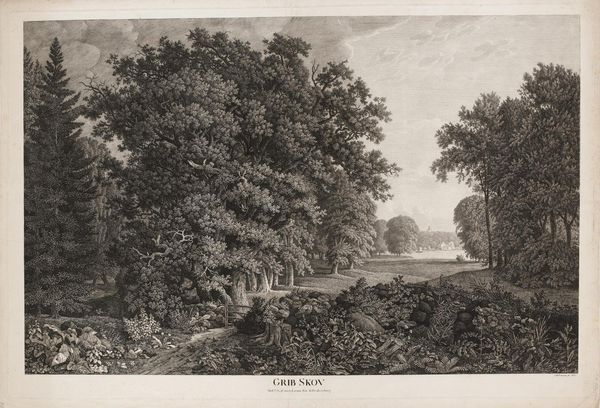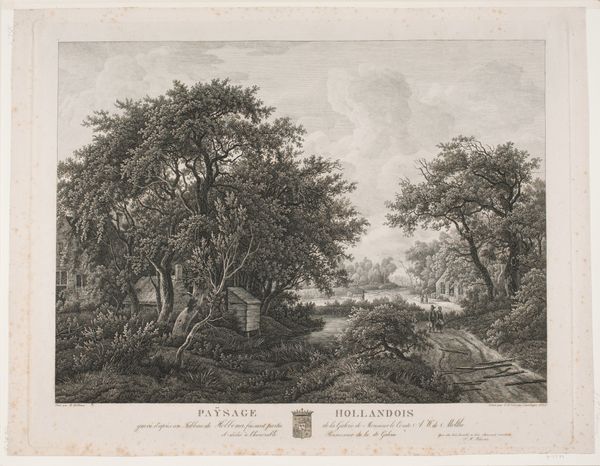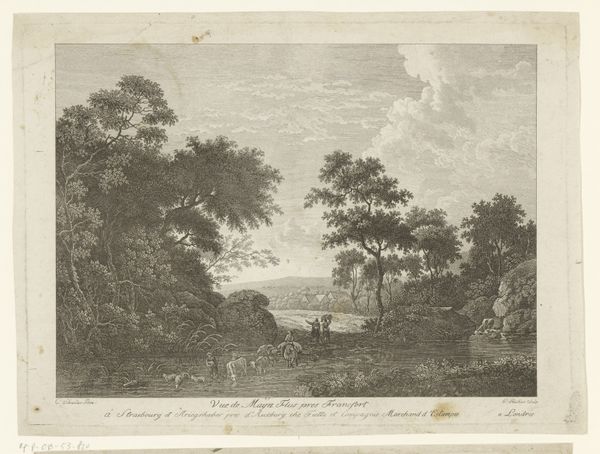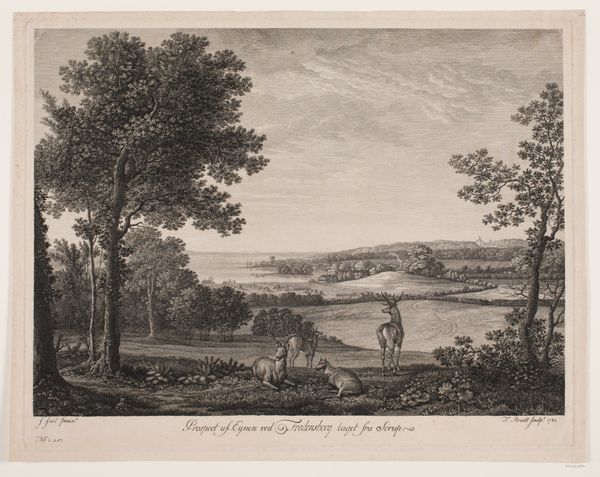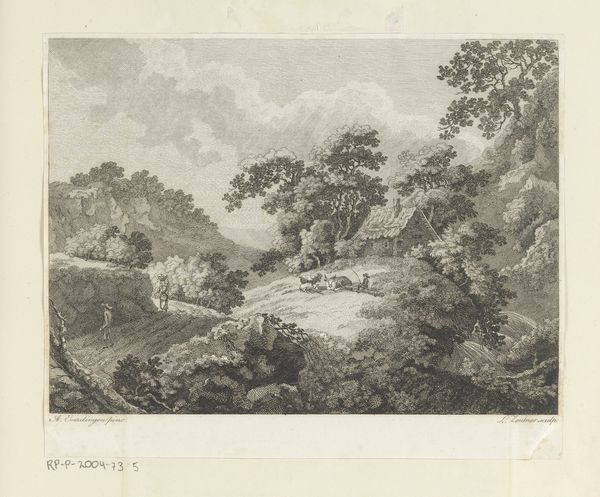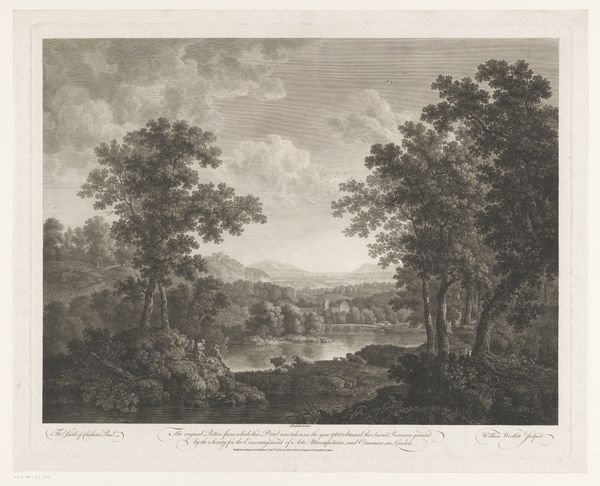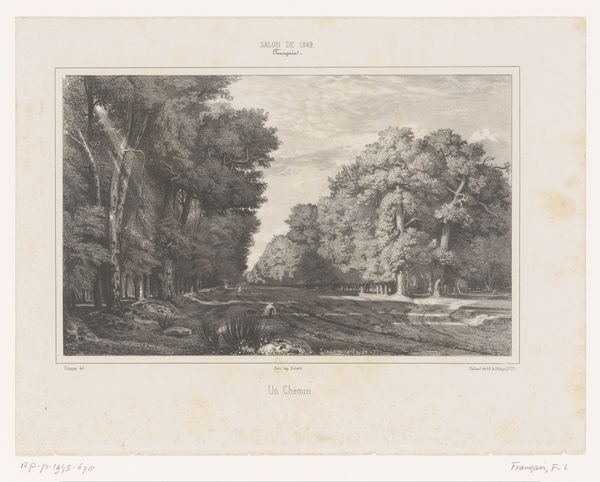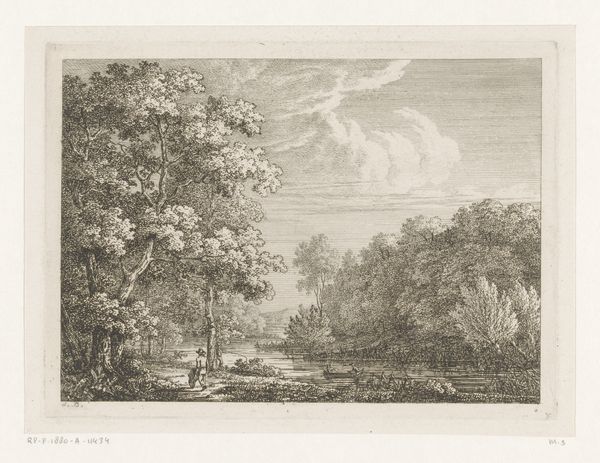
Grib Skov med udsigt over Esrum Sø til Fredensborg 1820
0:00
0:00
print, paper, engraving
# print
#
landscape
#
etching
#
paper
#
romanticism
#
line
#
engraving
Dimensions: 624 mm (height) x 949 mm (width) (plademaal)
Curator: Ah, the serenity! Such a detailed and immersive depiction of nature, although rendered in monochrome. Editor: Indeed! It's visually arresting. We’re looking at “Grib Skov med udsigt over Esrum Sø til Fredensborg”, or "Grib Forest with a view over Esrum Lake to Fredensborg". Søren Henrik Petersen created this print using engraving and etching techniques sometime around 1820. Curator: Petersen’s masterful use of line is striking. The varying densities create depth and a play of light within the forest itself. One wonders about the labour involved, especially with printmaking of the early 19th century. There must have been intense manual focus! Editor: Absolutely. Consider the context: Romanticism. Nature, in all its sublimity, was a central theme. However, this also raises questions. Whose gaze are we invited to adopt? What access to landscapes like these were afforded at the time, and to whom was this vista intended for consumption? This artwork, like many of its era, risks sanitizing complex power dynamics relating to land ownership and the aristocracy who used landscapes like these as places of leisure. Curator: I agree. However, I think Petersen’s skills must be examined; to transform copper and ink into something that simulates organic abundance requires real craft. This was long before the emergence of photography. The human hand shaped what an audience perceived. Also note the materials! This is an etching and engraving on paper; easily circulated which, from an art market perspective, increased his exposure, and potentially revenue. Editor: Good point, and these reproductions democratized the consumption of landscape scenes for a broader audience, which challenged traditional patronage. Still, we have to interrogate how art like this intersects with societal privilege and who were able to even *afford* prints like this at that time. Also, look how neatly the scene composes the human element, i.e., Fredensborg palace, into the landscape: who are we not seeing within this vision? Curator: Very true; you do present compelling socio-historical aspects, but also allow space for the process of engraving. Without that skill we wouldn't be questioning the narrative constructed here at all! Editor: Well said! The materiality, and the methods used in creating this piece really allow it to express so many insights into Danish Romanticism and what it stood for!
Comments
No comments
Be the first to comment and join the conversation on the ultimate creative platform.

